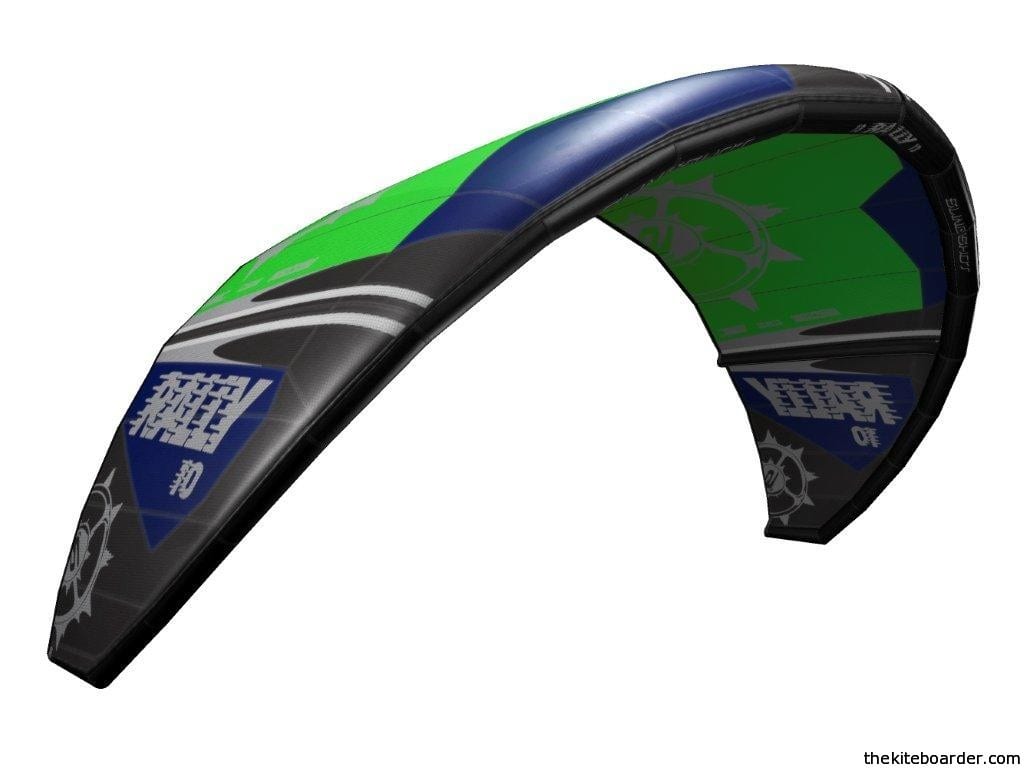For the best reading experience, click on the View in fullscreen button below.
[issuu layout=http%3A%2F%2Fskin.issuu.com%2Fv%2Flight%2Flayout.xml showflipbtn=true pagenumber=65 documentid=101118225147-27dc781345284e52895ad58efe8e3f8a docname=the-kiteboarder-december-2010 username=The-Kiteboarder-Magazine loadinginfotext=The%20Kiteboarder%20Magazine%20December%202010 width=600 height=391 unit=px]
Product Name: Rally
Product Category: Open Delta C
Product Style: Freestyle, waves
Sizes Available: 4, 6, 8, 10, 12, 14m
Release Date: Available Now
Slingshot’s 2011 LEI kite product line maintains is roots in the C-shape DNA. Each one of their kites has evolved from the original C-shape kite and then has been refined to meet the needs of various conditions and riding styles. Kite designers Amery Bernhart and Tony Logosz shed some light on their newest creation, the Rally, an open delta C-kite.
Slingshot has rolled out the 2011 Rally, a completely new kite for the company. Where does this kite fit in amongst the Slingshot product mix?
The Fuel is our original C-kite, the RPM is our Open C, the Key is our Hybrid Delta C, and the Rally is our Open Delta C. The Rally is part of our Crossover collection which caters to the majority of riders. This kite crosses over into all styles of riding from freeride to freestyle and surf.

2011 Slingshot Rally
Why would you recommend riders choose or not choose the Rally over what else is coming from Slingshot for 2011? What kind of rider is the Rally best suited for?
The Rally shares the crossover label along with our RPM. They are both friendly, easy to use, high performance kites. The differentiation between the two is the platform. The RPM is an Open C platform, and the Rally is an Open Delta C platform. What this means is that the Open C platform is more tailored towards a traditional C-kite turning radius and feel at the bar. This kite is a bit more slippery at the edge of the window, excels at unhooked riding, and is suited best for those style kiters. Contrast this to the Rally which has Delta DNA. This kite will lend itself to a tighter turning radius and more low end grunt, bigger, loftier jumps, and more depower at the bar. The Rally is best suited for the intermediate to advanced rider who wants to boost big, but also be able to shut off the kite when needed from the bar.
The new Rally boasts a three strut design. How did Slingshot achieve the same stability and performance between the smaller and largest sizes?
The Rally includes the return of Slingshot’s patented Splitstrut design. The advantage of this construction is that it adds more structure and durability to the kite. We have also learned a lot about three strut designs from our previous kites. The stability and the performance of the larger sizes comes from the LE diameter and where the struts are located. The LE diameter controls the turning speed and the lift. We picked a size that was a good balance between these two. The struts are positioned in such a way that they control the balance of the kite, while also keeping the proper tension on the trailing edge through turns.
Slingshot promotes the Rally as offering the first pulley-less bridle and forum participants have commented on how short it is. Other than more simplicity and less parts to wear out, are there any other benefits to it?
We were able to achieve this simple and compact bridle due to the addition of the Splitstrut construction. This added more structure to the kite itself and gave us the opportunity to make the bridle what it is. This gave us a couple additional benefits. The first is a direct connection to the kite, giving the kite a solid, direct feel and response. The second benefit is that the short bridle has no chance of tangling up on the wingtip when the kite gets rolled around on the water — a definite advantage to a kiter who is dropping their kite in precarious situations by learning new skills or taking their kite out in the surf.
Is this bridle unique to the Rally only or can we expect to see it on other 2011 kite products?
Right now, this bridle is unique to the Rally. This is due to the unique combination of Splitstrut and Open Delta C-shape. However, this shape has shown itself to be a good light wind performer, so it’s very possible to see a similar shape and bridle configuration on a future kite as well.

Photo Sharkeye/Reload Productions
How do the various attachments points affect the kite’s performance?
The options to tune the Rally are available on the rear line attachment points. The further forward you choose to set the attachment point, the more bar pressure and kite feedback you will get. Turning speed is not affected very much, but the bar pressure to turn will increase some. The further towards the trailing edge you put the attachment point, the lighter the bar pressure and less feedback you will get.
Are there any other performance or safety characteristics you’d like to point out?
Besides low end grunt, range, and big, lofty boosts, the Rally exhibits excellent upwind performance. Also, the relaunchability of this kite is as easy as it gets.
The Rally comes with Slingshot’s Compstick Bar. Were any changes made to it from 2010?
The Compstick bar now comes with some refinements to the depower handle which makes the trim action easier to use. It now requires less effort to adjust.
All 2011 Slingshot products feature Microsoft Tag. What is this?
The Microsoft MOBI tags appear as stickers on all of our 2011 products. With any iPhone or Blackberry device and the MOBI app, the bar code can be scanned and automatically launches a short informative video about the product in question. Basically when you’re at the store, making your buying decision, you can get all the unfiltered product information direct from the source just by scanning the tag. It’s super easy and fun!


